The aster is a popular flower that blooms in late summer and fall. With its wildflower beauty and lush texture, asters have long been considered an enchanted flower. Asters come in a variety of intense colors from rich purples and violets to bright whites and pale pinks. Their name comes from the Greek word for “star” due to their natural star-like shape. Beyond their visual appeal, asters have a rich history of meaning and symbolism.
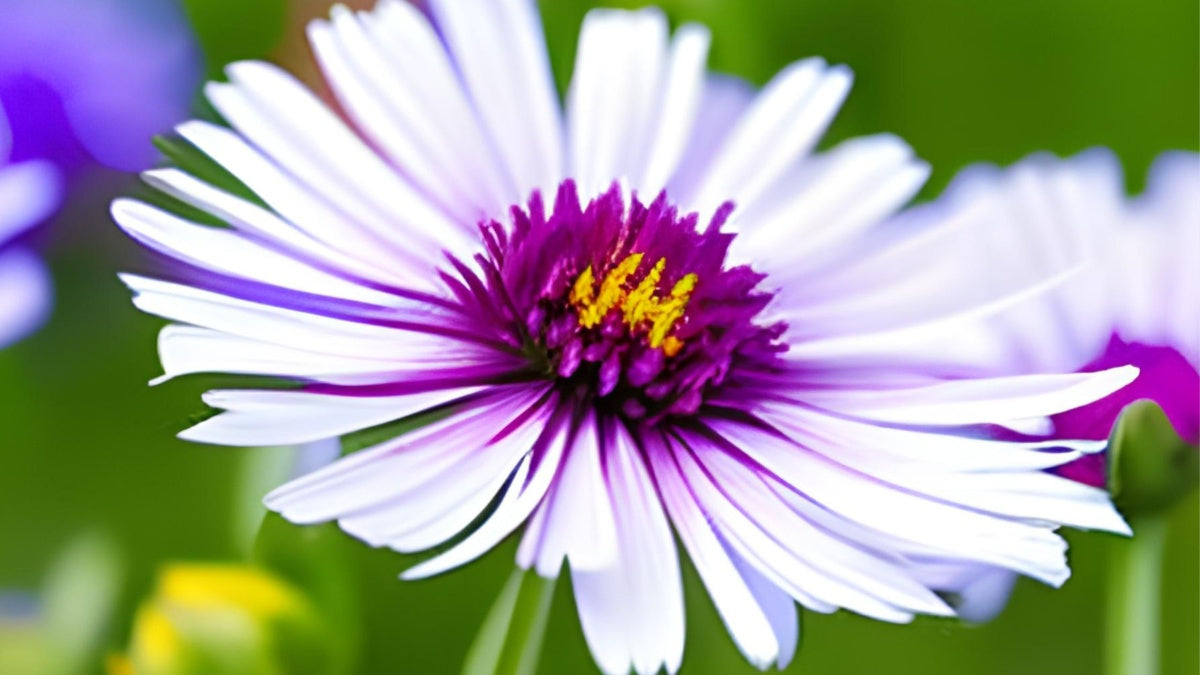
Mythology and Folklore of Asters
Asters have their roots in Greek mythology. It is said that as the Greek goddess Astraea left the earth during the Iron Age, the beautiful wildflowers sprang up in the path of her footsteps. This link to the goddess of innocence symbolizes the purity and delicateness of asters. According to another tale, when Virgo scattered stardust to create the Milky Way the asters were formed from the leftover dust.
In ancient times, it was believed that when asters bloomed it was a signal that fairies had returned after summer’s end. Single blooms were laid at fairy altars to call them near for wish making. The magical flower also let people see fairies nearby when held under the chin. If the aster reflected in the person’s skin, they would be able to see the fairies around. Faerie lore says that growing asters helps attract fairy folk to a garden.
Asters also feature in Native American legends. One says that a bad spirit had inhabited the land, poisoning plants and killing game. As people began to starve, the whirling star-like blooms of asters grew, signaling that the Great Spirit had returned balance and chased off the evil. Another legend describes asters appearing in the spot where a child’s teardrop touched the earth. The wildflowers bloomed to cheer up people with their colors and spread hope.
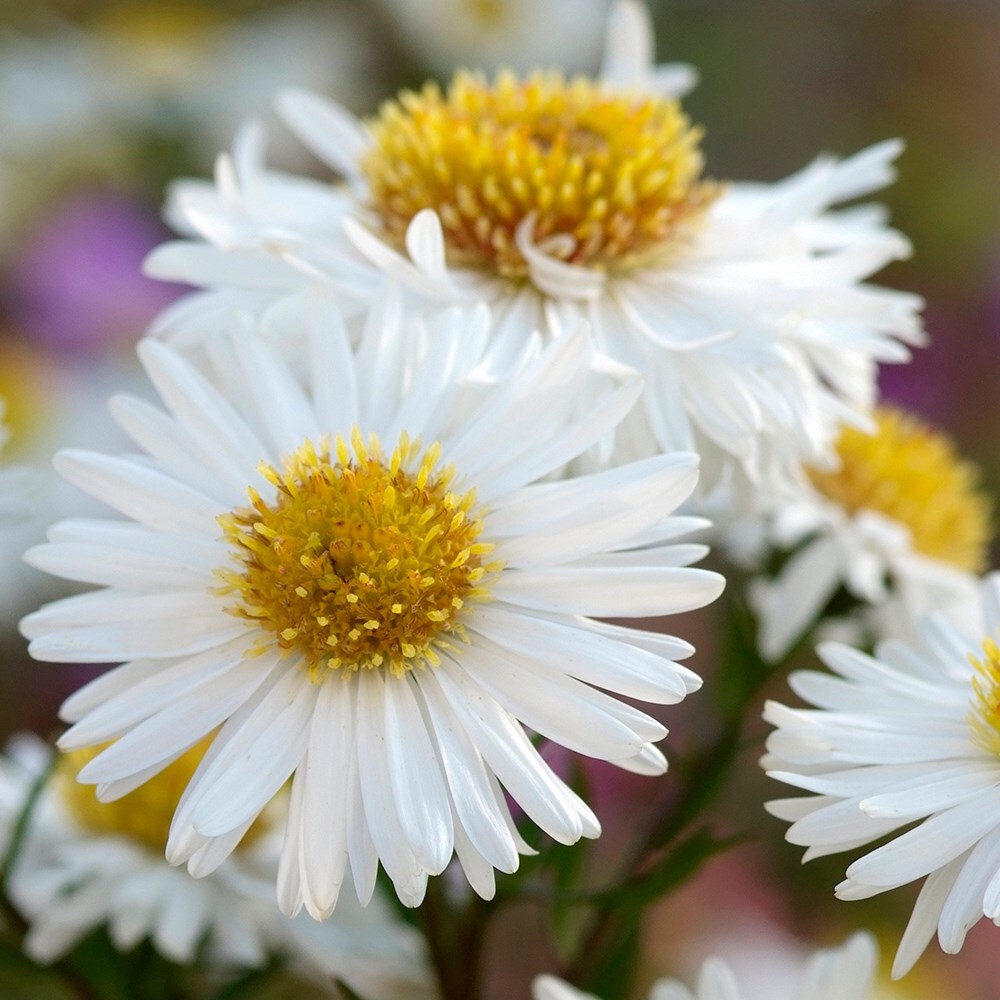
Aster Flower Meanings and Symbolism
The rich background gives asters a wide range of symbolic meanings:
Love and Wisdom
The aster flower has long been a symbol of love and wisdom, with a rich history dating back to the Victorian era. In the language of flowers, which was popular during the Victorian period, each flower had a specific meaning that could convey emotions and sentiments without the need for words. The aster was often used to express deep feelings of love and patience, making it a popular choice among lovers.
In this context, the aster flower represented patience, specifically the patience that is required in matters of the heart. It symbolized the idea of waiting for reciprocal feelings to bloom or for wise insights to unfold. This sentiment is reflected in the quote “patience is bitter, but its fruit is sweet,” as the giver of an aster flower was essentially expressing their hope and belief that their love would eventually be returned or that understanding would be gained between two individuals.
Furthermore, the star shape of the aster added to its symbolic significance. The five pointed petals were said to represent the five elements of love: faith, hope, love, luck, and purity. This star shape also embodied the eternal nature of love. Just like the stars that shine brightly in the night sky, love was seen as something that would endure and never fade away.
As a gift, the aster flower conveyed hope – hope that affection or understanding would be reciprocated in time. It was a gentle reminder to the recipient that the giver was willing to wait for love to blossom or for understanding to be achieved. This gesture of giving an aster flower showed a deep level of devotion and commitment, as well as a belief in the power of love and patience.
Today, the aster flower continues to hold its meaning of love and wisdom. It is still commonly used as a symbol of patience and enduring love, making it a popular choice for couples and loved ones. Whether given as a gift or used in floral arrangements, the aster remains a beautiful and meaningful flower that conveys a message of hope, love, and wisdom.
Daintiness
Asters are stunning flowers that have captured the hearts of many throughout history. With their delicate appearance and vibrant colors, they have been a beloved symbol in the world of flora and fauna. But what truly sets asters apart is their deep and meaningful symbolism, particularly in the Victorian era.
In the language of flowers, each flower carries a specific meaning that can be used to convey emotions and sentiments without having to say a word. During the Victorian era, this language became very popular and was widely used for communication, especially in social settings where expressing one’s true feelings may not have been appropriate or acceptable. Asters, with their charming appearance and rich symbolism, became a favorite among those who wanted to express their sentiments in a subtle yet meaningful way.
The Victorian meaning of asters is “Daintiness.” This reflects the delicate appearance of these wildflowers, which look fragile but possess an enduring hardiness that outlasts many other summer blooms. The word “dainty” itself evokes images of something elegant and small, and this perfectly describes the appearance of asters. However, it also suggests a sense of fragility and vulnerability, which is a stark contrast to the actual resilience and durability of these flowers.
This contradiction in meanings reflects the complex nature of asters. While they may seem dainty and delicate on the surface, they are actually strong and resilient plants that can withstand harsh weather conditions and thrive in various environments. This quality of asters is often seen as a symbol of strength and perseverance, making them even more significant in the eyes of the Victorians.
Aside from their Victorian meaning of daintiness, asters also carry other symbolic associations. In Greek mythology, it is said that the goddess Asterea cried tears that turned into asters when she saw the earth suffering. Because of this, asters are also associated with love and compassion, as well as with wishes for better health and healing.
In addition to these meanings, giving someone asters can also be seen as a wish for gentleness and a light touch. This can be interpreted in different ways, such as wishing for the person to have a gentle approach in life or to handle situations with care and sensitivity. It can also be seen as a wish for the recipient to have a light and happy heart, free from burdens and troubles.
The intricate symbolism of asters makes them a beloved flower that continues to be cherished and appreciated by many. From their delicate appearance to their hidden strength, they truly embody the beauty and complexities of life. So the next time you come across an aster, take a moment to appreciate its meaning and the message it carries.
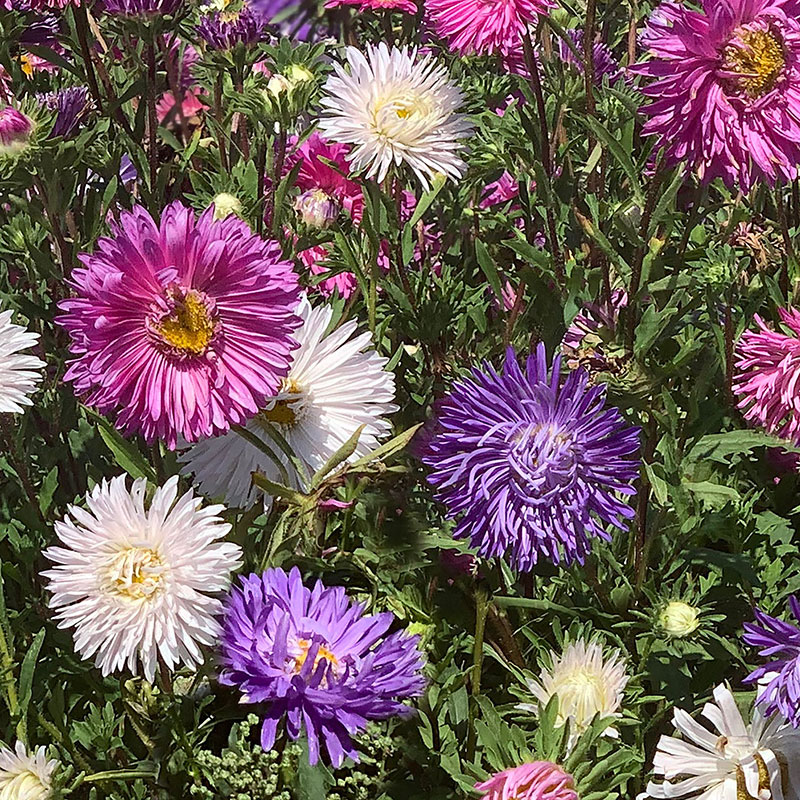
Trust
Asters are one of the most beloved and well-known flowers, with their star-shaped blooms and vibrant colors. They are commonly seen in gardens, floral arrangements, and even as tattoos. However, what many people may not know is that asters have a deep and significant meaning behind them.
As a talisman, asters symbolize trust. This meaning can be traced back to their appearance in the fall, when the earth seems to be dying and going through a period of change. Despite this seemingly bleak season, asters are able to bloom and shine brightly with their star-shaped flowers. This resilience and ability to persevere in difficult times represents the idea of trust.
The fall season is also associated with the concept of death and endings, but asters remind us that even in the face of these things, we can still have faith and hold onto hope. The fact that asters bloom in the fall, when many other flowers have wilted away, is a powerful reminder that persistence pays off. Just like the asters, we must trust in our own abilities and keep pushing forward, even when faced with challenges.
In addition to representing trust, asters given as a gift also hold a special significance. They are often seen as a symbol of confidence and faith in someone staying true. By giving someone asters, you are expressing your belief in them and your trust that they will remain loyal and steadfast. This makes asters an excellent gift for friends, family, and loved ones, as they convey a message of unwavering support and trust.
Furthermore, the star shape of the aster flower is significant in itself. Stars have long been associated with guidance, inspiration, and protection. In fact, ancient Greeks believed that asters were created from stardust, linking them to the divine and spiritual realm. This adds even more depth to the symbolism of asters, as they represent not only trust and perseverance, but also a connection to something greater and higher.
The meaning of asters as a talisman is profound and multi-faceted. They represent trust, resilience, perseverance, and even spiritual guidance. As we admire these beautiful flowers in the fall, let us be reminded of their important message and strive to have the same qualities they embody. Let us trust in ourselves, have faith in others, and always remember that our persistence will eventually lead us to success.
Afterthought
Aster flowers have been a beloved symbol in various cultures and traditions for centuries. These beautiful blooms, with their delicate petals and vibrant colors, have captured the hearts of many people around the world. However, among all the different meanings and symbolism associated with aster flowers, one stands out the most – Afterthought.
The term “Afterthought” refers to something that is added or considered later, after the main event or idea has already taken place. It is often seen as something that comes as an addition, a final touch or an epilogue to the main story. This meaning is deeply rooted in the history and characteristics of aster flowers.
One of the reasons why asters are associated with the meaning of afterthought is because of their blooming season. While most flowers bloom during the spring and summer months, asters tend to bloom in late summer and fall. This means that while other flowers had their time to shine, asters waited until everyone else was done before making their grand entrance. This delayed blooming gave them the nickname “Frost flowers,” as they were often the last flowers to bloom before the cold winter set in.
This delayed blooming of asters can also be interpreted as a metaphor for a delayed arrival or a second chance. Just like these flowers, which come into full bloom after others have already wilted away, sometimes in life, we may miss our first opportunity but get a second chance to make things right. In this sense, asters represent not just an afterthought, but also the idea of patience, perseverance and resilience.
Furthermore, the season in which asters bloom, which is typically between late summer and fall, also adds to their meaning of afterthought. During this time, the days start getting shorter, and the weather becomes colder. Many people associate this time of year with winding down, reflecting on the past and preparing for the future. Asters, with their late arrival, can symbolize this period of reflection and contemplation. They serve as a gentle reminder to take some time to think about what is important and what may have been missed during the hustle and bustle of the year.
In addition to their delayed blooming, asters also hold a special meaning in Greek mythology. According to legend, asters were created by the tears of the Greek goddess, Astraea, who wept when she saw that there were no stars left in the night sky. This mythological tale adds another layer of symbolism to asters, connecting them to the idea of longing, nostalgia, and remembrance.
Asters acquired the meaning afterthought from blooming later than other flowers, representing patience, second chances, reflection, and nostalgia. Their delicate beauty and unique blooming time make them stand out and remind us to slow down and appreciate the little things in life. So, the next time you see an aster flower, remember its deeper meaning and let it inspire you to cherish the present moment and those around you.
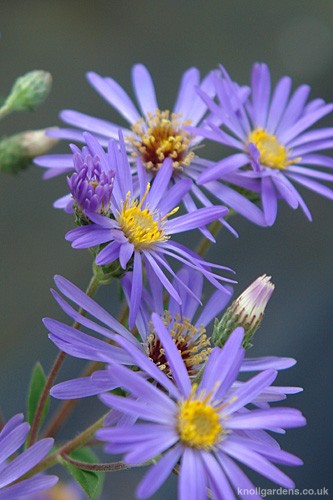
Remembrance
Aster flowers, also known as starworts or Michaelmas daisies, have been used in floriography – the language of flowers – for centuries. The word “aster” comes from the Greek word meaning “star”, which is fitting as these flowers have a star-like appearance with their radiating petals.
In floriography, asters are known to symbolize remembrance. This meaning stems from ancient Greek mythology, where it was believed that the goddess Astraea, who represented innocence and purity, cried tears that turned into stars when she saw the chaos and destruction on earth. These stars then fell to the ground and transformed into aster flowers, serving as a reminder of the goddess’s presence and the importance of remembering her teachings.
Aside from their mythological significance, asters were also believed to hold the memories of summer within their blooms. It was said that the bright and vibrant colors of asters were a happy reminder of warm sunny days and the joy that came with them. As summer is a time of growth, vitality, and happiness, giving asters as a gift expressed that you were thinking back fondly on times shared with someone. It was a way of saying, “I remember the good times we had together and want to cherish those memories.”
The symbolism of asters can vary depending on their color. For instance, white asters symbolize purity, innocence, and new beginnings, making them a popular choice for weddings and baby showers. Pink asters convey love and affection, while purple asters represent wisdom and royalty. Red asters, on the other hand, symbolize passion and deep feelings of love and desire.
In addition to their symbolism of remembrance, asters are also associated with courage, patience, and elegance. Because they bloom in late summer and fall, when most other flowers have wilted, they are seen as resilient and enduring. Their long-lasting blooms are a reminder to be patient and have courage during challenging times.
In some cultures, asters are also considered to be a symbol of love and fertility. In ancient Rome, for example, aster flowers were offered to the goddess Venus as a way to attract love and increase fertility. This belief has carried on to modern times, with some people using aster flowers in love spells or placing them under their pillows to dream of their future lover.
The aster flower holds a deep and meaningful symbolism in floriography. Its association with remembrance, happy memories, and resilience makes it a popular choice for gifting on special occasions or simply to express your feelings for someone. Next time you come across an aster, take a moment to appreciate its beauty and the rich meaning it holds.
Patience
The aster flower, also known as the star flower, is a beautiful and fascinating wildflower that holds a significant symbolic meaning. Native to North America, this delicate flower has been admired for its vibrant colors and unique shape for centuries. The name “aster” comes from the Greek word for star, which is fitting as the flower’s petals radiate outwards like a starburst.
One of the most commonly known meanings of the aster flower is patience. These small but mighty flowers spend an entire season hidden in the soil, waiting for the perfect moment to send up their starry stems and blossom into their full glory. Unlike many flowers that bloom quickly and fade just as fast, asters take their time to grow and develop, showing us the importance of patience in life.
In a society where instant gratification is often valued, the aster serves as a reminder to slow down and be patient. It encourages us to trust in the natural process and have faith that things will unfold at the right time. This message is especially relevant in today’s world, where we are constantly bombarded with messages to speed up our lives and achieve everything quickly.
The symbolism of patience associated with the aster flower can also be seen in its blooming season. Asters typically bloom in late summer or early fall, when many other flowers have already withered away. This demonstrates the flower’s resilience and ability to withstand the changing seasons, reminding us that good things come to those who wait.
Furthermore, the aster flower symbolizes a belief in allowing things to develop naturally rather than forcing them. In a world where we often try to control every aspect of our lives, the aster reminds us that some things are beyond our control and we must learn to let go and trust in the universe’s timing.
For these reasons, the aster is a popular gift to give to someone who has shown patience, resilience, and trust in their journey. It serves as a beautiful and meaningful way to acknowledge and appreciate someone’s determination and ability to wait for the right moment.
The aster flower holds a significant symbolic meaning of patience. Its ability to thrive in adverse conditions and its slow yet steady growth process serves as a powerful reminder for us to trust in the natural order of things and embrace patience in our own lives. So next time you see an aster flower, take a moment to appreciate its beauty and remember the valuable lesson it represents.
Good Luck
Aster flowers hold a special significance in Chinese culture, where they are considered to be a symbol of Good Luck. The Chinese name for aster is “magical star”, which reflects the belief that this flower has the power to spread fortune and bring luck to those who possess it. This belief is deeply rooted in the Chinese culture and has been passed down through generations.
In Chinese tradition, the wild aster is believed to have magical powers that can bring abundance and prosperity into one’s life. It is often associated with the concept of Qi, which is the vital energy that flows through all living things. According to traditional Chinese medicine, when Qi is balanced and flowing freely, good health, happiness, and prosperity follow. The vibrant colors and delicate petals of the aster flower are thought to be a representation of the free-flowing Qi, making it a highly auspicious symbol in Chinese culture.
One way in which asters are incorporated into Chinese culture is through home decor. Hanging pictures of asters in the home is believed to bring good luck and promote prosperity. These flowers are also commonly planted in yards and gardens, as they are thought to attract positive energy and create a harmonious environment. In addition, having asters in one’s home or garden is believed to ward off negative energy and bring balance and good fortune to the household.
The act of giving asters as gifts is also seen as a gesture of wishing someone good luck. Whether it is a small bouquet or a potted plant, presenting someone with asters is believed to bring them blessings and good fortune. It is a popular gift for occasions such as weddings, housewarmings, and other celebrations where one wishes to convey their well-wishes and hopes for a prosperous future.
In Chinese culture, each color of the aster flower holds its own specific meaning. For example, purple asters are associated with wealth and luxury, while pink asters represent love and romance. White asters, on the other hand, symbolize purity and innocence, making them a popular choice for weddings and other ceremonial events.
The aster flower holds a significant place in Chinese culture, where it is seen as a symbol of Good Luck. Its magical properties and association with positive energy and prosperity have made it a popular choice for home decor, gifts, and other special occasions. Whether one believes in its mystical powers or not, the aster remains a beautiful and cherished flower in Chinese tradition, representing hope, positivity, and good fortune.
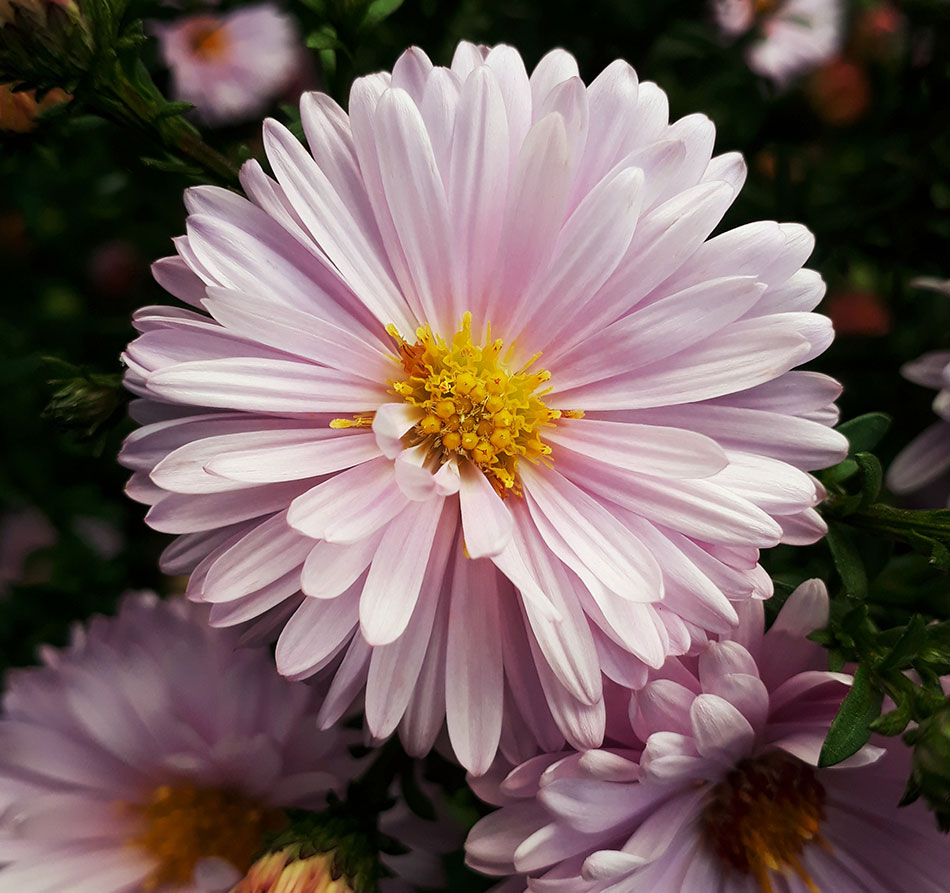
Farewell
Aster flowers have been a popular choice for gardens and bouquets for centuries, not only for their vibrant colors and delicate appearance, but also for their rich symbolism and meaning. These beautiful flowers hold a special significance, especially in the late summer and early fall months when they bloom. The name “aster” comes from the Greek word for star, which perfectly captures their shape and stunning star-like petals.
One of the most notable meanings associated with aster flowers is their symbolic transition from warmth to cold. As the summer season comes to an end and the weather begins to cool down, asters burst into full bloom, marking the start of fall. It is during this time that the greenery and vibrancy of summer starts to fade, and the earth prepares for the upcoming colder months. This transition is represented by the blooming of asters, making them a powerful symbol of change and transition.
The bittersweet appearance of asters also plays a significant role in their symbolism and meaning. Unlike other flowers that bloom in various colors, asters are mostly seen in shades of purple, blue, and white. These colors, especially the deeper shades, can be associated with feelings of sadness and longing. As such, asters became commonly associated with bidding farewell or saying goodbye. They were often used in bouquets or flower arrangements to express a sense of loss or longing for someone who was leaving.
Furthermore, sending asters to someone also held a deeper meaning. It expressed a hope that the person would return and that the relationship or bond between them would be renewed or strengthened. This hope was derived from the fact that asters bloom annually, returning each year with the change of seasons. Therefore, sending asters was a way to convey a message of hope and anticipation for a reunion or a new beginning.
In some cultures, aster flowers are also believed to have healing and protective powers. In ancient times, it was believed that keeping a bouquet of asters in the home would ward off evil spirits and bring good luck to the household. Additionally, aster tea was used as a remedy for various ailments, including headaches, colds, and digestive issues.
Asters are still highly valued for their beauty and symbolism. They are often used in floral arrangements and bouquets to convey heartfelt messages of farewell, hope, and renewal. Their delicate yet resilient nature continues to inspire people and make them a popular choice for gardens and floral displays. Whether used for decorative purposes or as a symbol of emotion, asters hold a special place in the hearts of many, making them a truly meaningful flower.
Elegance
Aster flowers are known for their delicate and refined beauty, making them a popular choice in gardens, bouquets, and floral arrangements. They come in a variety of colors, including shades of purple, pink, blue, and white, each with its own unique meaning and symbolism.
In the Victorian era, a time when language and communication were highly valued, flowers were often used to convey emotions and messages that may have been difficult to express through words alone. This was known as the “language of flowers,” or floriography, and it played a significant role in society’s social interactions and relationships.
In this intricate language of flowers, asters were associated with elegance and sophistication. Their simple yet refined appearance earned them a place in the Victorian flower language as a symbol of gracefulness and understated charm. They were seen as more elegant than showy summer blooms, representing a subtler and more refined form of beauty.
The refined colors of asters also played a role in their symbolic meaning. In general, purple was associated with royalty and luxury, while pink represented affection and admiration. Blue was seen as a calming and peaceful color, often linked to trust and harmony, while white symbolized purity and innocence. All of these colors can be found in different varieties of asters, making them even more versatile in their symbolism.
Gifting someone with asters was considered a thoughtful gesture, as it showed appreciation for their gracefulness and understated charm. It was a way to compliment and honor someone’s refined character and distinguished taste. Additionally, asters were often given as a token of love and admiration, making them a popular choice for romantic gestures and special occasions.
Today, the meaning of asters remains closely tied to their Victorian symbolism, with many still considering them a symbol of elegance and sophistication. They are often used in weddings, as they represent grace and refinement, and are also a popular choice for sympathy bouquets, symbolizing the purity and innocence of a loved one who has passed away.
In addition to their symbolic meaning, asters also have practical uses. They are known for their ability to attract butterflies and bees, making them a popular choice for pollinator gardens. In some cultures, they are also used in herbal medicine for their anti-inflammatory and diuretic properties.
The aster flower’s refined colors and delicate beauty make it a perfect representation of elegance in the Victorian flower language. Its understated charm and graceful presence have made it a popular choice for gifting and special occasions, and its symbolism continues to hold significance in modern times.
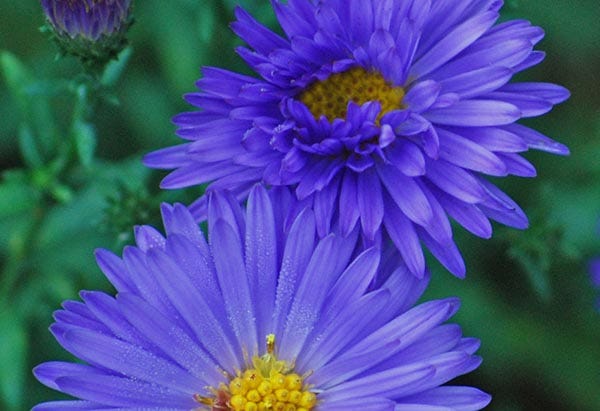
Conclusion
With their enduring grace and poignant symbolism, asters captivate both the eye and spirit. TheSAME versatile blossoms impart a wealth of meaningful messages from devotion to remembrance. Let the vibrant wildflowers infuse garden magic and convey cherished sentiments for generations to come. Revisit the glorious days of summer and reconnect through an aster’s ethereal beauty.

We’re Emma Carole Paradis and Kimberly Carole, the owners and designers of Impeccable Nest, based in Bedford, New Hampshire. A mother-daughter team with a love of design. Originally from Manhattan Beach, California, now based in Bedford, New Hampshire, we bring a Southern California cool and New England tradition to our design. Not only do we work together…we also live together in a multi-generational home…and a home that they are known to design for others.
